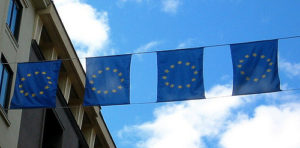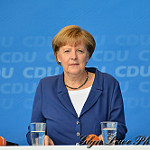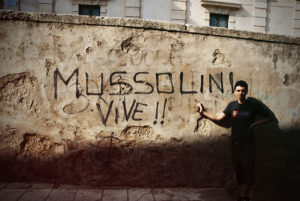
On Sunday March 4, 2018, the Italians held their national election. The day before Germany’s Social Democrats (SPD) voted to continue its “grand coalition” with Chancellor Angela Merkel’s party, the Christian Democratic Union (CDU).
Germany
Germany’s national elections took place last September. The Chancellor’s first attempt to form a governing coalition, without the SPD, failed. More about this is covered in our previous article, November 20, 2017 – Again, Europe Votes
Since the coalition negotiations, clear winners and losers have emerged.
The SPD gained several key cabinet positions formally held by the CDU. And, its pro-EU stance should have even more of an impact in the upcoming government.
 Angela Merkel retains the chancellorship but is not expected to be the CDU candidate next time around, and Martin Schulz resigned as SPD’s party head.
Angela Merkel retains the chancellorship but is not expected to be the CDU candidate next time around, and Martin Schulz resigned as SPD’s party head.
DW TV News thought the SPD vote to continue the coalition might be close. Instead, the Yes votes outnumbered the Nos by 66%. Some say the SPD saw it had to agree to avoid the risk of sliding into political oblivion.
A February poll, conducted by INSA in Germany, indicated the far right Alternative for Germany (or AfD) has bypassed the SPD. That would make it the second most popular party in Germany. The CDU-CSU partnership still holds the top spot. Five months ago, AfD was in third place.
Italy
The political limbo is considered over in Germany. But it’s just starting in Italy.
Days before the election Wall Street Journal’s Niki Blasina stated, “the March 4 election in the eurozone’s third-largest economy could have serious repercussions for the European Union.” Blasina remarked that,
“The challenges facing the EU are particularly acute in Italy, fractured electorate, a migration crisis, weak economic recovery, anger at legacy parties and dissatisfaction with the EU.”
As with Germany’s past election, no single party won the majority of votes.
The alliance of former Prime Minister Berlusconi’s center right party with with two far right parties — the eurosceptic, anti-immigration League (aka Northern League) and the smaller Brothers of Italy — received the most votes.
 One of the three openly promotes what once was. A February 24, 2018 NY Times article titled, Anti-Fascist Protesters Rally in Italy as Mussolini’s Heirs Gain Ground, stated the Brothers of Italy are the “modern heirs of the party that rose from the ashes of Mussolini’s Fascists.”
One of the three openly promotes what once was. A February 24, 2018 NY Times article titled, Anti-Fascist Protesters Rally in Italy as Mussolini’s Heirs Gain Ground, stated the Brothers of Italy are the “modern heirs of the party that rose from the ashes of Mussolini’s Fascists.”
Another party, the Five Star Movement (M5S) received almost as many votes as the three allies combined. If it formed a coalition with another party, some believe it could effectively govern. But who with? And what really represents the Five Star’s attitude toward the European Union — the strong Exit-the-EU line of the past or the softer tone expressed in the recent campaign?
The rest of the world will just have to wait to see the make up of Italy’s next government.
Photo Credits: Flags by futureatlas.com, License: CC BY 2.0; Chancellor by GlynLowe Photoworks, License: CC BY 2.0; Italian Wall by federico maccagni, License: CC BY-NC 2.0